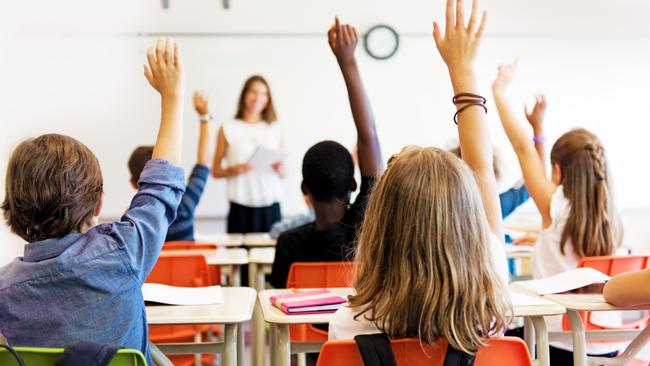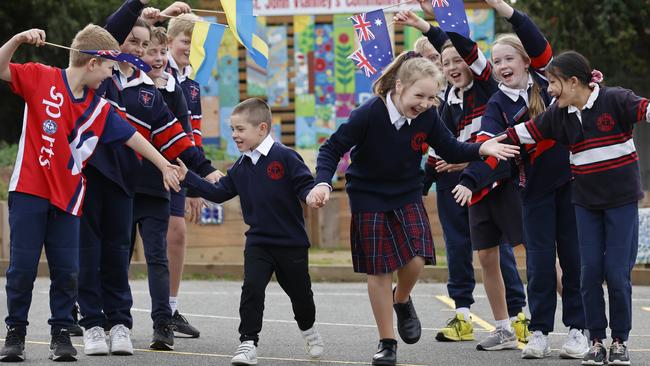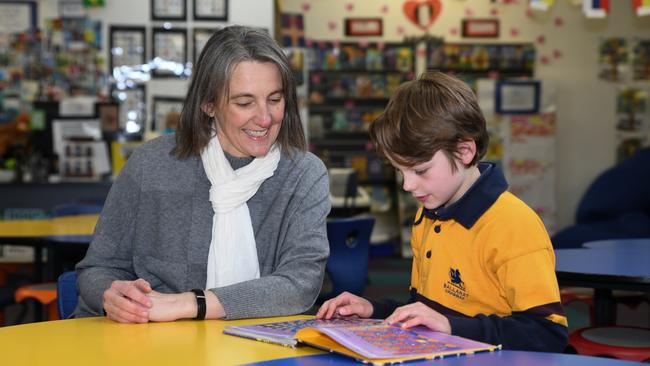We analyse the data: Are private primary schools a waste of money or bang for buck?
Public primaries are outperforming private junior schools in key areas, so in tough times are parents wasting their money on fees?

Education
Don't miss out on the headlines from Education. Followed categories will be added to My News.
Public primary schools are outperforming their expensive private counterparts in key learning areas.
Analysis of the most recent available NAPLAN results for students in grades three and five has revealed that many state primary schools in metropolitan areas have this year given independent schools a run for their money, with independent schools charging thousands more in tuition for poorer or marginally higher outcomes.
While independent schools have largely maintained higher average NAPLAN scores in reading and writing, state schools have reported improved performance in numeracy in both grades three and five.
Grade three students at Parkdale Primary School achieved an average score of 441 in numeracy compared to a 375 average at St John Vianney’s Primary School, located about 1km away.

John Henry Primary School in Pakenham achieved an average of 526 in year five maths, while students at nearby Beaconhills College averaged 514.
Beaconhills charges $7,535 in tuition fees for a year three student and $8,285 for grade fives, while John Henry charges parents just $300 per year.
Meanwhile, Overport Primary School in Frankston outperformed St Augustine’s School in most key learning areas.
With the exception of writing across both grades, the public school, which has 732 students enrolled, achieved higher average results in reading, spelling, grammar and numeracy.
Cheltenham Primary School outperformed the nearby Our Lady of the Assumption School in all learning areas, with the largest difference reported between the school’s scores in year 3 numeracy.
A 66 point difference saw Cheltenham average 464, while its private counterpart achieved a 398 average.
The trend continues in some regional areas in Victoria, with grade five students at Ballarat North Primary School scoring a 514 average in numeracy compared to 509 at Ballarat Grammar, which charges $29,440 in annual tuition fees for a year five student.

Mildura’s Sacred Heart School only maintained marginal increases on the local public school, Ranfurly Primary School, averaging about a 10 mark difference in all assessment areas.
Several exclusive private schools in Melbourne’s inner suburbs continued to deliver top notch results that outperformed the local state school.
Students in both grades three and five at Brighton Grammar, which charges parents $28,392 and $31,380 for those year levels respectively, posted higher average across all learning areas, including a 64-mark boost in year five numeracy compared to Brighton Beach Primary School.
Brighton’s public counterpart still delivered high averages, including a 524 reading average and 520 in spelling.
The 2022 national NAPLAN report, released in October, showed that across the country, average numeracy scores for both male and female students fell compared to 2021 levels.
Victoria was the only state to have recorded “substantial decreases” in the past year, the national snapshot revealed.
The major slides in achievement were in year five numeracy and grammar and year nine spelling.
A damning report released by the Productivity Commission this week revealed that national reading and numeracy results have gradually declined over the last five years.
The report’s assessment of the National School Reform Agreement – which was agreed to by federal, state and territory governments in 2018 in a bid to improve student performance – found it had not achieved this goal, instead revealing that each year, almost 90,000 students do not meet minimum NAPLAN standards in reading and numeracy.




